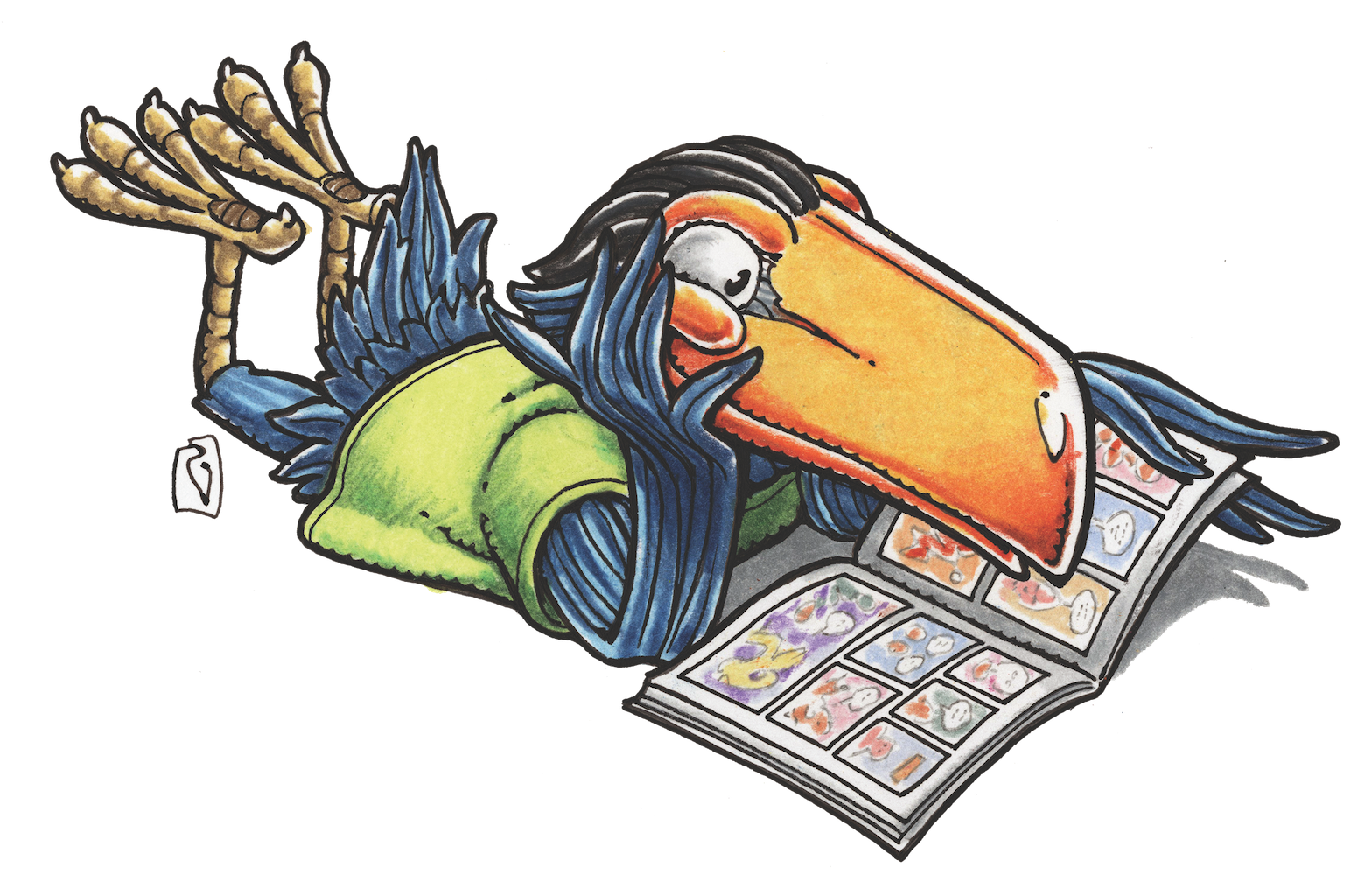STEVE LIEBER’S DILETTANTE
Dilettante 048: Managing


It’s a long-held truism that the one of the most dangerous times for a business is during a period of rapid growth. This is doubly true for cartoonists, who frequently run their own businesses with little or no support whatsoever.
But as a comic builds an audience, opportunities will present themselves: making merchandise, licensing, expanding into other media, advertising, distribution, partnerships, sponsorships. These can be the economic engine that makes it possible for a cartoonist to earn a good living making comics. They also require time and knowledge that is entirely separate from making comics. But if making comics is already a full time job, how does a cartoonist take on these additional responsibilities? For some, the answer has been bringing in additional help. The job is broad, complex, and continuously changing, so for the purpose of this article, I’ll just call the position “manager.”
Let me state right up front: This is a difficult position to fill. Everyone I’m aware of who does the job has been asked, “How do I find someone who does what you do?” And the answer is always “I don’t know.” Someone able to do the complete job of a business manager for a cartoonist has skills that that they could be putting to work in the corporate world, with more security and benefits, and better prospects for advancement. Most cartoonists who are ready to expand their empire don’t have the cash on hand to pay someone through the lean months that expansion will require. It’s a real chicken and egg dilemma, and can require a lot of trust on both sides.
But there are a lot of comics-savvy people out there with some business skills who may want to get more involved with comics. Taking care of some of business-side concerns for a favorite cartoonist could be an interesting side gig, with the potential to expand into a larger position. Many cartoonist/manager partners are also spouses or life partners.
But there are a lot of people out there who have left established comics companies and are looking for something with more freedom, less hierarchy, and others with experience that could be described as “comics adjacent.” If they’re willing to start small with a cartoonist, they can build a valuable partnership.
What are some tasks that a manager can take on?
Print Buying
A self-publisher has to deal with printers. They’ll need to get estimates, compare quality, find out who is reliable and trustworthy, and make decisions about the best way to get stock from wherever it was printed to various distributors, wherever it’s going to be stored.
Hiring and Managing Subcontractors
Graphic designers, production artists to make sure print files are properly assembled; flatters, letterers, fill-in artists or assistants; convention helpers and web developers. Someone has to hire them, communicate with them, supervise their work, pay them, and make sure they get their 1099s.
Maintaining a Web Presence
Every moment a cartoonist spends fighting with CSS, WordPress, MySQL, HTML, or any other tool or system is time that they could have been making comics. That new WordPress update broke your theme? Someone’s got to figure out how to revert to the previous install.
Dealing with Advertisers and Affiliates
These are important sources of income for many cartoonists on the web, and they’re an ever-shifting landscape.
Running an Online Store and Doing the Packing and Shipping
A cartoonist whose work is in demand should have a pen in their hand, not a box-cutter or a roll of packing tape. And they don’t need to be looking at spreadsheets, deciding when its time to restock the XL shirts, or if they need to make more of that pin set that did well last year, but may have tapered off. What new merchandise options are out there? Is running a book sale going to alienate important retail partners? Which packing option is best for shipping prints? How do you gently explain things to the fan in Europe who doesn’t believe that international shipping is really that expensive.
Handling Convention Logistics
Arranging convention appearances and signings, booking travel plans, and coordinating them with other scheduled items, managing inventory, making sure that booth, supplies, and sales-stock arrive where they need to be, when they need to be there.
Booking Interviews
Good press doesn’t always just happen. Frequently someone has to go out and wrangle it. And it takes time and attention to keep track of who reaches the right audience, and to maintain connections so that requests get responses.
Crowdfunding
Ask anyone who has run a Kickstarter campaign—it’s exhausting, and it’s a whole job all by itself. And then if the Kickstarter succeeds, there’s the never-ending work of fulfillment. Several thousand people each have a special request, an upgrade, a question about their reward, a change of address. And even working with a fulfillment company is a lot of work. You don’t just forward them an email and write a check. And if the cartoonist is running a Patreon, what sort of extras can you afford to offer?
Distribution
Writing solicitation copy, negotiating terms with distributors, ironing out snafus about whether a book is still available or not. Sending reminders that an invoice is overdue. Deciding whether adding on a new distributor is worth the hassle. Should the cartoonist/publisher give up a significant percentage of their profit for the advantage of partnering with an existing publisher to take advantage of their better distribution arrangements?
Answering all these problems requires both an understanding of business in general, of the current culture, and the cartoonist’s specific audience. And there will be continual changes in the business landscape. An important ad platform can quickly wither to insignificance. A new web-based service might pop up that could make a daunting task irrelevant. Is it worth the time to learn about it?
As you can see, running the business side for a cartoonist is a big, sprawling job that can require wearing many hats. I asked Cory Casoni, director of business development and brand management at Toonhound Studios about how one would get started. He said, “there’s no school for this. You just learn the job by doing it.” He suggested starting by getting to know the industry. Go to conventions. You can approach a cartoonist who seems ready to expand, maybe offer to work with them on one service, then expand from there as opportunities develop.
Are you doing business side or management work for a cartoonist? Or are you a cartoonist who has worked with one? I’d love to hear about your experiences. You can reach me on Twitter @steve_lieber or on Facebook.
Steve Lieber’s Dilettante appears the second Tuesday of each month here on Toucan!